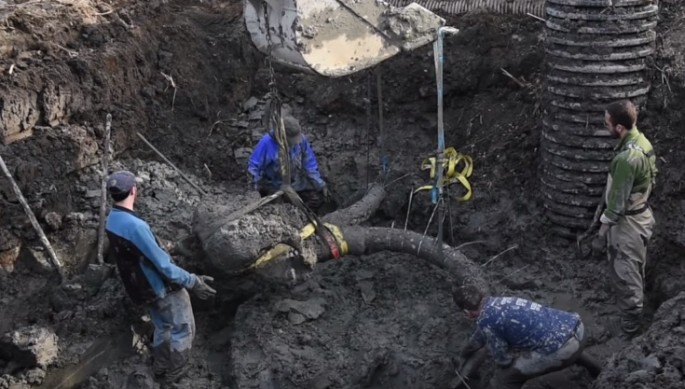Scientists have discovered a partial skeleton of a woolly mammoth in a farm in Michigan where the team uncovered clues not only about how these ancient creatures lived but also offered glimpses of how our ancestors thrived with mammoths, who once lived in the region.
Researchers from the University of Michigan reveals that the partial remains of the ancient colossal creature were recovered from a farmer's field some 16 kilometers southwest from Ann Arbor in Michigan.
Researchers from the university were notified about this discovery last Wednesday, September 30 where the team immediately began excavation work at the site the following day.
According to paleontologist Dan Fisher from the University of Michigan, the team apparently discovered more evidence than they were originally set out for as they went digging through the site, located about one hour's drive from the Windsor Detroit border crossing.
Fisher estimates that the mammoth was probably around 40 years old during the time of its death, living 10,000 to 15,000 years ago, where the bones are yet to be carbon dated. The skeletal remains include the mammoth's skull, jaw, tusks along with its vertebrae and ribs including shoulder blades, its pelvis and kneecap, making up one fifth of the animal.
Fisher also reveals that the mammoth was been "disarticulated" meaning its final state during the time of its death is suggesting that the bones were broken up from its joints as a result of human interference, where he also adds that this kind of arrangement was observed in other sites before.
The team believes that ancient humans who once lived in the region apparently subsisted on these types of animals where in many cases, ancient humans would hunt the mammoths and the animals' carcasses were also eventually scavenged.
Early humans would also eat or consume anything that they can of their mammoth kill however, it is only logical that they cannot consume everything in one time. Fisher also reveals that these early human ancestors also found a way to store their food since they cannot consume 3,000 pounds of leftovers.
Researchers believe that these early humans would submerge these carcass parts in special ponds where they possess a unique chemistry in water as the ponds' temperature and other various conditions allow the meat to be preserved for months at a time where early humans would come back and retrieve their meat as needed.



























